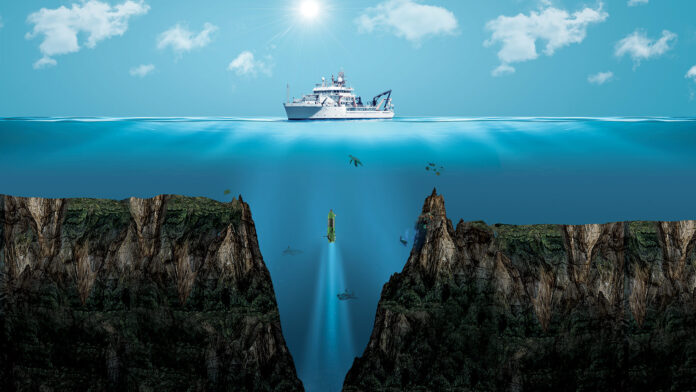The ocean, covering approximately 71% of the Earth’s surface, remains one of the least explored and mysterious places on our planet. With its vast and enigmatic depths, the ocean holds untold treasures and surprises waiting to be discovered. Over the years, scientists and explorers have embarked on numerous expeditions to delve into the ocean’s depths, and their findings continue to amaze and inspire us, as they unveil new species and ecosystems that were previously unknown to us.
One of the primary challenges in exploring the ocean’s depths is the immense pressure that increases with depth. As we descend deeper into the ocean, the pressure intensifies, making it a hostile environment for human exploration. However, advancements in technology, such as remotely operated vehicles (ROVs) and autonomous underwater vehicles (AUVs), have allowed us to overcome this challenge and reach depths that were once considered inaccessible.
These technological advancements have opened up a whole new world of discovery. As scientists send these robotic explorers into the depths, they capture high-definition imagery, videos, and collect samples, enabling us to study and understand the ocean’s depths like never before. These deep-sea expeditions have revealed an astonishing array of new species and ecosystems that have evolved to survive in the extreme conditions of darkness, cold temperatures, and high pressure.
One of the most remarkable discoveries in recent years is the existence of hydrothermal vents, also known as black smokers. These vents are located on the ocean floor, where tectonic plates meet, and they release superheated water laden with minerals. The extreme conditions around these vents, including high temperatures and high concentrations of toxic chemicals, were previously thought to be uninhabitable. However, scientists discovered thriving communities of unique and bizarre organisms around these vents, including giant tubeworms, blind shrimp, and eyeless crabs. These organisms have adapted to utilize the chemical energy from the vents through a process known as chemosynthesis, which is an alternative to photosynthesis.

Apart from hydrothermal vents, other deep-sea ecosystems, such as cold seeps and whale falls, have also revealed a wealth of new species. Cold seeps are areas where methane and other hydrocarbons leak from the seafloor, creating a rich feeding ground for specialized organisms. These ecosystems support diverse communities, including mollusks, tubeworms, and bacteria that thrive on the energy derived from these hydrocarbons.
Whale falls, on the other hand, occur when a whale carcass sinks to the ocean floor. These massive carcasses create unique habitats that sustain communities of organisms for years. From hagfish and bone-eating worms to scavenging crustaceans, these ecosystems rely on the gradual decomposition of the whale’s body, forming a complex and interconnected web of life that provides scientists with valuable insights into the process of nutrient cycling in the deep sea.
In addition to discovering new species, exploring the ocean’s depths has also shed light on the interconnectedness of ecosystems and the importance of biodiversity. Many deep-sea organisms have evolved intricate symbiotic relationships, where different species depend on each other for survival. For instance, deep-sea anglerfish possess a long, fleshy appendage that acts as a lure to attract prey. Additionally, these fish have a symbiotic relationship with bacteria that inhabit their bodies and provide bioluminescence, helping them in their hunting endeavors.
The exploration of the ocean’s depths has far-reaching implications beyond just the discovery of new species. It has profound implications for our understanding of evolution, adaptation, and the resilience of life in extreme environments. The knowledge gained from these deep-sea expeditions can also have practical applications, such as the development of new drugs, bioinspired materials, and technologies that can withstand extreme conditions.
However, it is essential to approach the exploration of the ocean’s depths with caution and a focus on conservation. The fragile and slow-growing nature of deep-sea ecosystems makes them highly vulnerable to human activities such as deep-sea mining, bottom trawling, and pollution. As we unveil new species and ecosystems, we must also strive to protect and preserve them for future generations.
In conclusion, the exploration of the ocean’s depths continues to captivate and astonish us with its discoveries of new species and ecosystems. With advancements in technology, we are delving deeper into the ocean than ever before, shedding light on the mysteries that lie beneath. From hydrothermal vents to cold seeps and whale falls, these ecosystems have unveiled a rich tapestry of life that thrives in the most extreme conditions. As we explore further, it is imperative that we maintain a careful balance between exploration and conservation, ensuring that we protect and preserve the ocean’s depths for generations to come.

